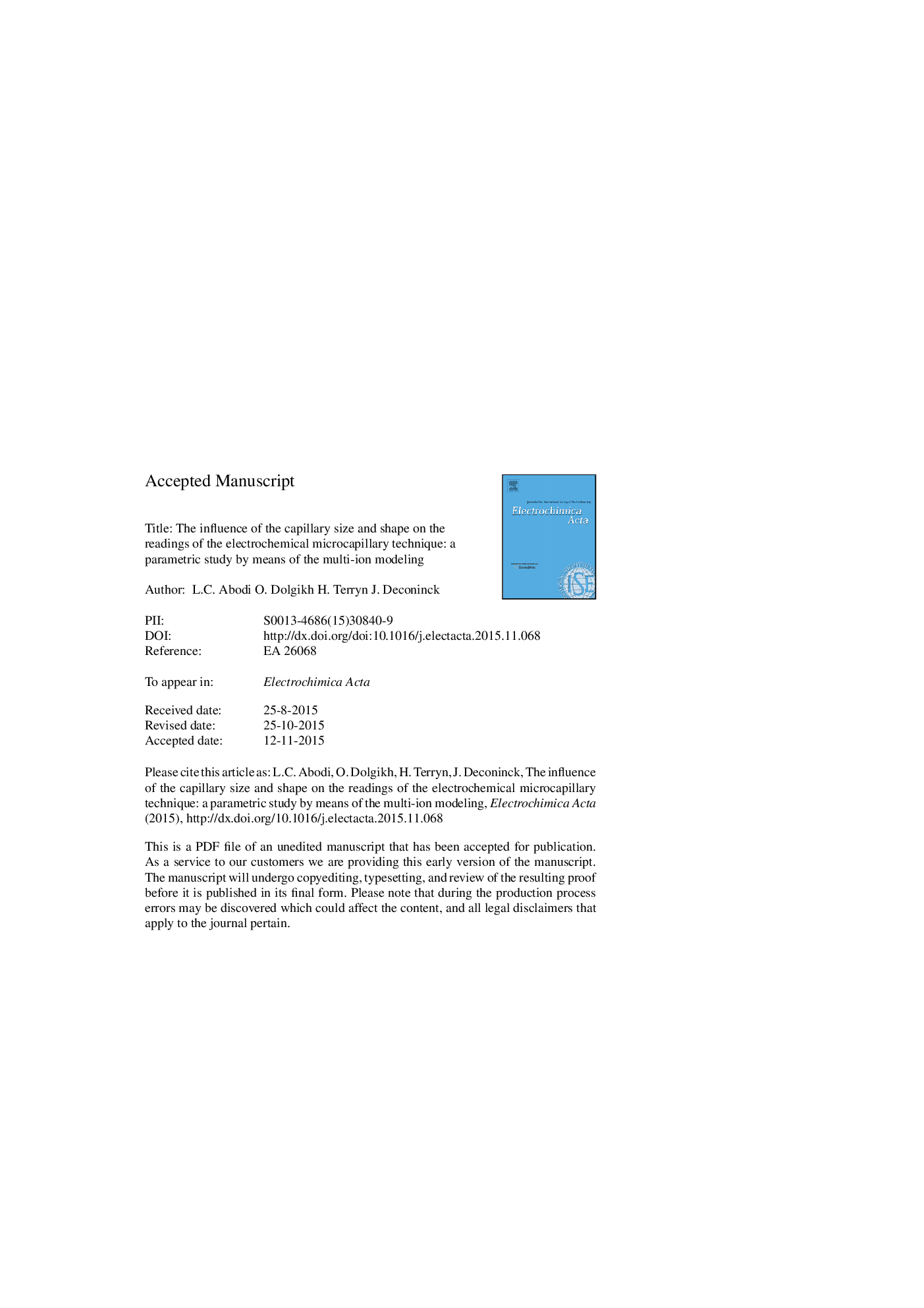| Article ID | Journal | Published Year | Pages | File Type |
|---|---|---|---|---|
| 6609427 | Electrochimica Acta | 2016 | 27 Pages |
Abstract
Introduction of microcapillary techniques opened a new range of methods to study the behavior of microsystems. Although these measurements are widely employed and results obtained are generally recognized, certain aspects require careful consideration. We present the results of a parametric study performed by means of multi-ion modeling in order to clarify the influence of the microcapillary size and shape together with the permeability of the sealant for oxygen on the polarization curves obtained on metals with different corrosion activity. The obtained results show that when a corroding metal is (almost) non-active (e.g. aluminum), the oxygen limiting current increases with increase of the ratio between the radius of the capillary main part and the end radius γ = R/r but the corrosion potential remains the same. For more active metals and alloys (e.g. steel), a change of the aspect ratio γ leads not only to the proportional change of the limiting current, but also to a substantial shift of Ecorr. Analytical solutions derived for limiting current density in a microcapillary confirmed the simulated results. Permeability of the sealant for oxygen plays a significant role mostly for narrow capillaries with low ratio γ and more active metallic substrates. It is shown that the problem of comparison of polarization data obtained with capillaries of different size can be partially avoided by use of capillaries with the same aspect ratio γ but only if the quality of the sealant (low permeability for oxygen) is assured.
Keywords
Related Topics
Physical Sciences and Engineering
Chemical Engineering
Chemical Engineering (General)
Authors
L.C. Abodi, O. Dolgikh, H. Terryn, J. Deconinck,
